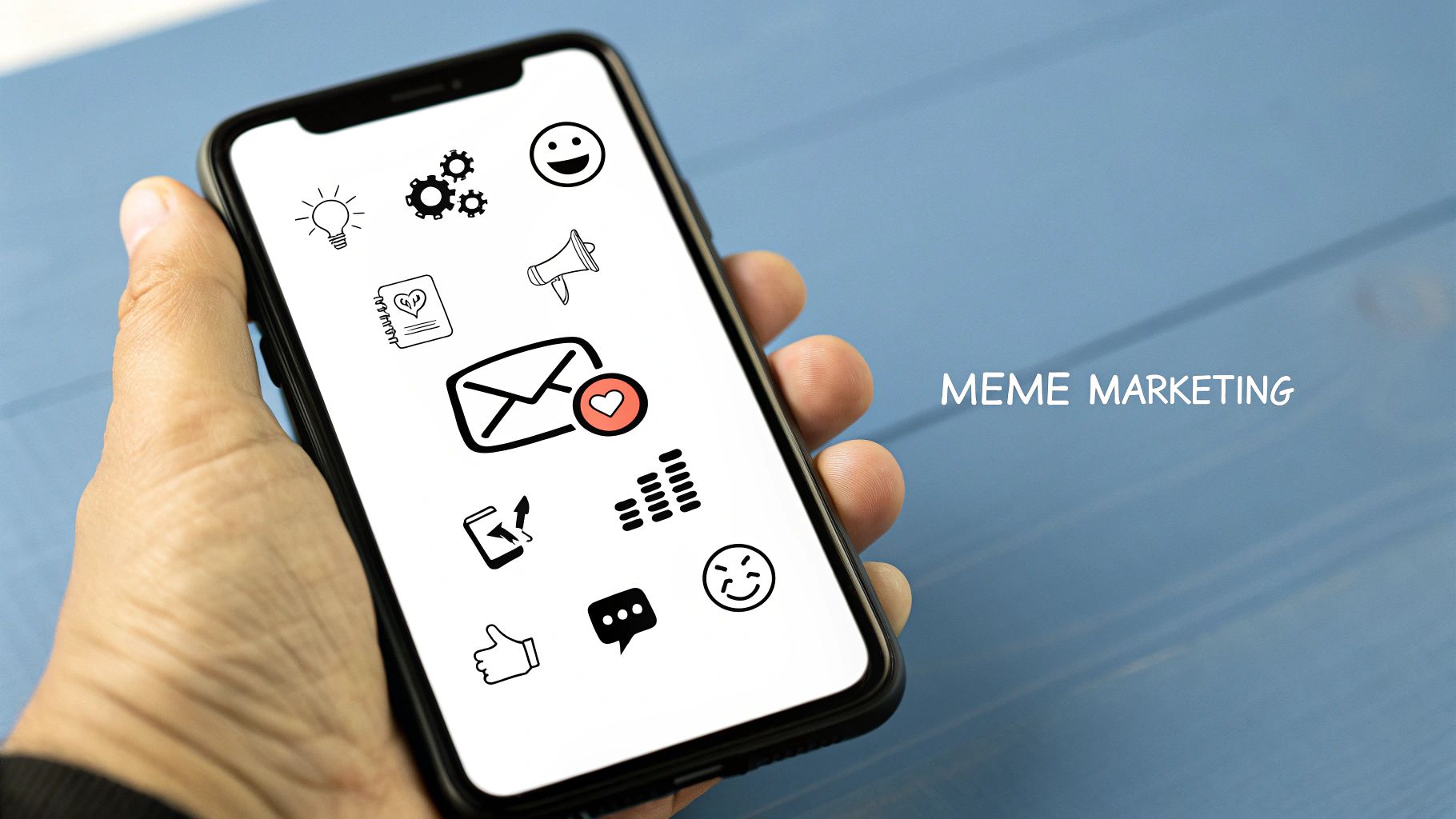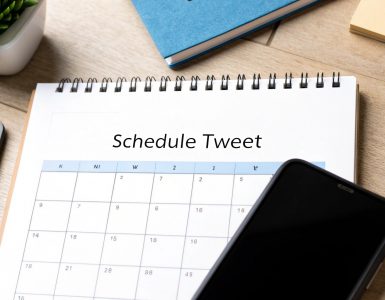Staring at a blank content calendar is a familiar challenge for every social media manager and business owner. The pressure to consistently publish engaging, high-quality posts can feel like a relentless treadmill. You know you need to post, but the well of inspiration often runs dry, leading to repetitive or uninspired content that fails to connect with your audience. This cycle not only wastes time but also misses crucial opportunities to build your brand, foster community, and drive results. The solution isn't just about finding more ideas; it's about building a strategic library of proven concepts you can adapt and reuse.
This guide is your definitive resource for breaking that cycle. We’ve compiled a comprehensive list of actionable content ideas for social media, designed to fill your calendar with posts that resonate and perform. Forget generic advice. Here, you'll find specific, evergreen categories packed with practical examples and implementation tips. We will explore everything from harnessing the power of User-Generated Content (UGC) and offering exclusive behind-the-scenes glimpses to creating valuable educational tutorials and leveraging the immediacy of live streaming.
Each idea is a building block for a more dynamic and effective social media presence. You'll learn not just what to post, but how to execute each concept to maximize engagement and impact. By the end of this article, you will have a versatile toolkit to draw from, ensuring your social media channels remain a vibrant and valuable asset for your business. We'll also cover how to schedule and rotate these ideas for maximum efficiency, turning your content strategy from a daily chore into a powerful, automated system. Let's dive in and transform your content calendar.
1. User-Generated Content (UGC) Campaigns
User-Generated Content (UGC) campaigns are a powerful strategy that turns your audience into brand storytellers. Instead of creating content yourself, you encourage your customers to create and share posts featuring your products, services, or brand experience. This authentic, user-driven approach builds immense social proof and trust, as recommendations from real people are often more persuasive than brand-led advertising.

This method taps into the desire for community and recognition. When a customer shares their experience, they are not just posting a photo; they are endorsing your brand to their personal network. This organic amplification is one of the most effective and cost-efficient content ideas social media managers can implement. Iconic examples include GoPro's entire marketing model, which is built on thrilling customer-shot videos, and Starbucks' annual #RedCupContest, which generates millions of festive, brand-centric posts each holiday season.
How to Implement UGC Campaigns Effectively
To launch a successful UGC campaign, you need a clear structure and compelling incentives. Start by defining the goal: are you aiming to showcase a new product, highlight a specific use case, or simply boost brand awareness?
- Create a Unique, Branded Hashtag: A memorable hashtag like Coca-Cola’s #ShareACoke is crucial. It acts as a digital filing system, making it easy for you to find, track, and share all the content created for your campaign.
- Offer Compelling Incentives: Motivate your audience to participate. This doesn't always have to be a big prize. Incentives can range from a feature on your official social media pages, a small discount on a future purchase, or entry into a contest for a larger reward.
- Set Clear Guidelines: Be explicit about what you're looking for. Do you want photos, videos, or text testimonials? Specify any rules regarding content quality, brand mentions, or themes to ensure you receive high-quality, relevant submissions.
- Always Ask for Permission: Before you repost or repurpose any user’s content, always obtain their explicit permission. A simple direct message or public comment asking for consent is usually sufficient. This respects your audience and protects your brand legally.
2. Behind-the-Scenes Content
Behind-the-scenes (BTS) content is a fantastic way to pull back the curtain and show your audience the inner workings of your brand. Instead of just showcasing the final, polished product, you give them an exclusive look at the people, processes, and passion that make it all happen. This strategy humanizes your brand, fostering a deeper connection and building trust by demonstrating transparency and authenticity.

This type of content makes your audience feel like insiders. It transforms your company from a faceless entity into a collective of real people working towards a common goal. Showing the journey, including the small wins and even the occasional challenge, makes your brand more relatable and memorable. Great examples include Ben & Jerry's showing their flavor creation process, Patagonia sharing footage from their repair workshops, or Buffer's radical transparency about its remote work culture and operations. These content ideas for social media show the 'why' behind the 'what'.
How to Implement Behind-the-Scenes Content Effectively
To create compelling BTS content, focus on revealing aspects of your business that your audience wouldn't normally see. The goal is to be genuine, not perfect.
- Spotlight Your People and Processes: Introduce your team members and let them share their roles or a day in their life. Film a walkthrough of how a product is made, an order is packed, or a brainstorming session unfolds. This adds a human element that resonates deeply.
- Use Casual, Ephemeral Formats: Instagram Stories, TikToks, and Facebook Reels are perfect for raw, unpolished BTS moments. Their informal nature makes the content feel more authentic and less like a scripted advertisement.
- Show Triumphs and Troubles: Authenticity isn't just about showing success. Sharing a small mistake and how you fixed it, or a challenge your team overcame, can be incredibly powerful for building trust and relatability with your audience.
- Always Get Consent: Before featuring employees or their workspaces, ensure you have their enthusiastic permission. Respecting privacy is paramount and maintains a positive internal culture.
3. Educational and How-To Content
Educational and how-to content solidifies your brand’s authority by providing genuine, actionable value to your audience. Instead of directly selling, you focus on teaching skills, solving problems, or sharing knowledge related to your industry. This approach builds trust and positions your brand as a go-to resource, attracting a loyal following that appreciates your expertise.

This type of content directly addresses your audience's pain points and curiosities, making it one of the most effective content ideas social media managers can use to foster engagement and long-term loyalty. Brands like HubSpot excel at this with their extensive library of marketing guides and courses, while Home Depot’s DIY project tutorials empower homeowners with practical skills. These examples show how teaching, rather than telling, can create a powerful connection with consumers.
How to Implement Educational and How-To Content Effectively
To create educational content that resonates, you must first understand what your audience wants to learn. Start by identifying the most common questions, challenges, and goals within your community.
- Address Frequently Asked Questions (FAQs): Turn your customer service inquiries into content. Create posts, short videos, or infographics that answer the questions your audience is already asking. This is a simple yet powerful way to provide immediate value.
- Break Down Complex Topics: Take a large, intimidating subject from your industry and break it into a series of digestible steps or tips. Use carousels, short-form videos, or blog posts to guide your audience through the process, making it feel achievable.
- Use Clear Visuals and Demonstrations: Whether it's screenshots for a software tutorial or a video for a physical product, visual aids are essential. Demonstrations make instructions easier to follow and significantly improve comprehension and retention.
- Create Downloadable Resources: Enhance your educational posts by offering free checklists, templates, or worksheets. This not only provides extra value but also serves as a great lead generation tool.
4. Interactive Polls and Q&A Sessions
Interactive polls and Q&A sessions are a fantastic way to boost engagement by transforming passive followers into active participants. Instead of broadcasting one-way messages, these formats invite direct, real-time communication. This includes everything from simple Instagram Story polls and question stickers to in-depth live Q&A sessions on platforms like Facebook Live or Twitter Spaces. This approach builds a strong sense of community by making your audience feel heard and valued.

These interactive formats are powerful because they provide immediate feedback and invaluable audience insights. By asking questions, you can gather data on product preferences, content desires, and customer pain points. This two-way dialogue was popularized by figures like Gary Vaynerchuk with his Q&A-driven shows and has become a staple on platforms like Instagram and Reddit, with its famous "Ask Me Anything" (AMA) format. Using polls and Q&As is one of the most effective content ideas social media managers can use to foster genuine connection.
How to Implement Polls and Q&A Sessions Effectively
A successful interactive session requires thoughtful planning and active moderation. Your goal is to spark conversation and make participation easy and rewarding.
- Ask Meaningful Questions: Go beyond simple "yes or no" questions. Use open-ended questions in your Q&A sessions to encourage detailed responses. For polls, offer choices that help you make real business decisions, such as asking followers to vote on a new t-shirt design or blog topic. For more ideas on what to ask, you can explore how to brainstorm new social media ideas on evergreenfeed.com.
- Schedule and Promote in Advance: Don't host a live Q&A spontaneously. Announce it several days ahead of time and at an optimal time for your audience's time zone. Use countdown stickers and reminders to build anticipation.
- Prepare Backup Questions: Participation might be slow at the beginning of a live session. Have a list of pre-prepared questions ready to fill any lulls and keep the conversation flowing until the audience warms up.
- Follow Up on the Results: Don't let the conversation end when the poll closes. Always share the results and explain what you learned or what action you will take based on the feedback. This demonstrates that you value your audience's input and closes the feedback loop.
5. Trending Topics and Newsjacking
Trending topics and newsjacking involve creating content that capitalizes on current events, viral trends, or popular cultural moments. This strategy requires you to connect your brand to the wider conversation happening in real-time. By tapping into what's already on everyone's mind, you can capture significant attention, boost engagement, and showcase your brand's personality and relevance.
Success with this tactic depends on speed, relevance, and an authentic connection to the trending topic. When done well, it can lead to viral moments and a massive increase in reach. The classic example is Oreo's "You can still dunk in the dark" tweet during the 2013 Super Bowl blackout. It was simple, timely, and perfectly on-brand, demonstrating how a quick, clever response can outperform a multi-million dollar ad. Similarly, Wendy's has built its entire Twitter persona around witty participation in trending conversations.
How to Implement Trending Topics and Newsjacking Effectively
To successfully newsjack, you need a system for rapid identification and creation. Your goal is to add value, whether through humor, a unique perspective, or helpful information, not just to ride the wave.
- Monitor Trends Constantly: Use tools like Google Trends, Twitter's "Explore" tab, and social listening platforms to stay ahead of what’s gaining traction. Set up alerts for keywords relevant to your industry so you never miss a beat.
- Establish a Rapid Approval Process: Trends have a short lifespan. You need an agile internal process that allows your team to create, review, and approve content in minutes or hours, not days. Have templates ready to accelerate creation.
- Ensure Brand and Value Alignment: Before you post, ask: Does this trend align with our brand's voice and values? Forcing a connection can feel awkward or inauthentic. It’s equally important to know when not to participate, especially with sensitive or controversial topics.
- Add Genuine Value or Humor: Don't just state the trend; connect it back to your brand in a meaningful way. Offer a unique take, a funny meme, or a helpful tip that relates the trend to your audience’s interests. This is a key differentiator between successful and forgettable content ideas social media strategies.
6. Customer Success Stories and Case Studies
Customer success stories and case studies are powerful content ideas social media managers can use to demonstrate tangible value. This strategy moves beyond simple testimonials by showcasing real, in-depth examples of how your products or services solved a specific problem for a client. By presenting a detailed narrative, you provide undeniable social proof and build credibility with potential customers looking for proven solutions.
This method transforms abstract benefits into concrete results. Instead of just saying your service "boosts productivity," a case study shows exactly how a specific company used it to reduce project completion times by 30%. This data-driven storytelling resonates deeply with B2B audiences and anyone making a considered purchase. Brands like HubSpot and Salesforce have built their authority by consistently publishing detailed case studies that highlight impressive ROI metrics and client transformations.
How to Implement Customer Success Stories Effectively
A compelling success story requires more than just a happy customer; it needs a clear narrative structure and quantifiable results. The goal is to guide your audience through a journey, from a familiar problem to a desirable outcome.
- Follow the Problem-Solution-Result Framework: Structure your story clearly. Start by outlining the problem the customer was facing. Introduce your product as the solution they implemented. Finally, present the impressive results, using specific metrics, data, and direct quotes.
- Focus on Measurable Outcomes: Vague claims are forgettable. Use hard data to make your case. Did revenue increase by a certain percentage? Did they save a specific number of hours per week? Quantifiable results make the success story more believable and impactful.
- Incorporate Direct Quotes and Visuals: Let your customer tell the story in their own words. Direct quotes add authenticity and emotional weight. Enhance the narrative with visuals like charts showing growth, before-and-after images, or even a short video testimonial from the satisfied client.
- Obtain Full Permission: Before publishing any story, ensure you have explicit, written consent from the customer. This includes permission to use their name, company logo, quotes, and any performance data. This protects both your brand and your client relationship.
7. Live Streaming and Real-Time Content
Live streaming and real-time content offer an unfiltered, authentic way to connect with your audience by broadcasting video as it happens. This format pulls back the curtain on your brand, creating an immediate and interactive experience that pre-recorded content cannot replicate. From product launches and Q&A sessions to behind-the-scenes tours, live content fosters a sense of urgency and exclusivity, making viewers feel like part of a special event.
This approach capitalizes on the audience's desire for genuine interaction and transparency. The unedited nature of live video builds significant trust and humanizes your brand, showing the real people behind the logo. Notable examples include brands using Instagram Live for flash sales and product reveals, professionals hosting expert interviews on LinkedIn Live, or creators running educational workshops on YouTube Live. This strategy is one of the most dynamic content ideas social media managers can use to capture immediate attention and engagement.
How to Implement Live Streaming Effectively
A successful live stream requires careful planning to ensure a smooth, professional, and engaging broadcast. Start by defining a clear purpose for your stream: are you educating, entertaining, selling, or gathering feedback?
- Promote Your Stream in Advance: Build anticipation and maximize attendance by promoting your live event across all your channels. Use countdown timers and create event pages on platforms like Facebook and LinkedIn to remind followers.
- Prepare and Test Your Setup: Nothing derails a live stream faster than technical difficulties. Test your camera, microphone, lighting, and internet connection thoroughly beforehand. Prepare key talking points or a loose outline to guide the conversation, but keep your delivery natural and spontaneous.
- Engage with Your Audience in Real-Time: The magic of live video is interaction. Acknowledge viewers by name, answer their questions as they come in, and respond to comments. This two-way dialogue makes the experience personal and memorable. You can even use live chat features to run quick polls or Q&As, similar to a Twitter chat.
- Repurpose Your Live Content: Always save your live stream recording. You can repurpose the full video as on-demand content, or you can edit it into shorter clips, highlight reels, quote graphics, and blog posts to extend its value long after the broadcast ends.
8. Seasonal and Holiday-Themed Content
Seasonal and holiday-themed content is a classic strategy that aligns your brand’s messaging with the cultural and chronological rhythms of the year. This approach taps into the existing excitement, conversations, and consumer behaviors surrounding holidays, seasons, and significant events. By creating timely content, you make your brand a relevant part of your audience’s current world, whether they're celebrating a major holiday or simply enjoying a change in seasons.
This method works because it leverages pre-built momentum and sentiment. From Starbucks’ iconic Pumpkin Spice Latte campaigns in the fall to Coca-Cola's legendary Christmas ads, brands use seasonal moments to create powerful emotional connections. These are excellent content ideas for social media because they provide a natural and predictable framework for promotions, engagement, and storytelling, making your brand feel both current and relatable.
How to Implement Seasonal and Holiday-Themed Content Effectively
Successful seasonal content requires foresight and creativity to stand out. Start by mapping out a calendar of relevant dates, including major holidays, awareness days, and seasonal shifts pertinent to your industry.
- Plan Far in Advance: Create a seasonal content calendar months ahead. This allows you to develop high-quality campaigns, visuals, and copy without rushing. For major holidays like Christmas, planning can begin as early as summer.
- Find a Unique Angle: Avoid generic "Happy Holidays" posts. Connect the theme directly to your brand's value proposition. A fitness brand, for instance, could offer "12 Days of Fit-mas" workout challenges instead of just a simple holiday greeting.
- Balance Promotion with Value: While seasons are great for sales, don't make every post a hard sell. Mix promotional content with valuable seasonal tips, such as a home improvement store sharing spring cleaning checklists or a food brand offering holiday recipes.
- Prepare Evergreen Seasonal Content: Some seasonal topics are timeless. Create high-quality content, like a "Summer Skincare Guide," that can be updated and reused annually. This saves resources while capitalizing on recurring interest.
- Respect Cultural Nuances: Be mindful of the diverse cultural and religious observances within your audience. Ensure your messaging is inclusive and respectful, avoiding assumptions about who is celebrating what.
9. Memes and Humorous Content
Memes and humorous content tap into the power of internet culture to entertain and connect with your audience on a more personal level. By using popular jokes, viral formats, and witty observations, you can showcase your brand's personality and make it more relatable. This strategy isn't about forced jokes; it's about understanding what makes your audience laugh and joining the conversation authentically.
When done right, humor humanizes your brand, making it feel less like a corporation and more like a friend. This approach can dramatically increase engagement, shares, and brand recall. Brands like Wendy's, with its infamous Twitter roasts, and Duolingo, with its unhinged owl persona on TikTok, have built entire communities around their unique sense of humor. This is one of the most effective content ideas social media managers can use to build a memorable brand identity.
How to Implement Memes and Humorous Content Effectively
Successfully using humor requires a deep understanding of your brand voice and your audience's sensibilities. The goal is to be funny without alienating potential customers or damaging your brand's reputation.
- Understand Your Brand's Comic Persona: Is your brand witty and sarcastic like Wendy's, or absurd and quirky like MoonPie? Define your humor style and stick to it consistently. Test jokes internally to ensure they land as intended.
- Stay Current, But Act Fast: Meme culture moves at lightning speed. What's hilarious today might be cringey next week. Use platforms like TikTok, Reddit, and Twitter to monitor emerging trends, but be ready to create and post content quickly while the format is still relevant.
- Align Humor with Your Niche: The best humorous content connects back to your industry or products. Create original memes that poke fun at common industry pain points or use a popular format to highlight a product benefit in an unexpected way.
- Use Hashtags to Amplify Reach: Pairing a funny post with relevant, trending hashtags can expose it to a much wider audience. For more insights on leveraging this, check out our ultimate guide to social media hashtags.
- Avoid Risky or Offensive Topics: Steer clear of humor related to politics, religion, or other sensitive subjects. The goal is to unite your audience with laughter, not divide them with controversy. Always prioritize brand safety.
Content Idea Types Comparison Matrix
| Content Type | 🔄 Implementation Complexity | 💡 Resource Requirements | 📊 Expected Outcomes | ⭐ Key Advantages | 💡 Ideal Use Cases |
|---|---|---|---|---|---|
| User-Generated Content (UGC) Campaigns | Moderate (needs moderation & incentives) | Low to Moderate (community management) | High engagement, trust, scalable content | Authenticity, cost-effective, social proof | Community building, brand loyalty, organic reach |
| Behind-the-Scenes Content | Low to Moderate (requires planning & consent) | Low (mobile devices & casual production) | Builds trust, emotional connection | Transparency, humanizes brand, relatable content | Showcasing culture, process transparency |
| Educational and How-To Content | High (research-heavy, detailed production) | Moderate to High (expertise & visuals) | Thought leadership, SEO, long-term loyalty | Authority building, actionable value | Tutorials, expertise sharing, lead nurturing |
| Interactive Polls and Q&A Sessions | Low (platform tools, real-time management) | Low to Moderate (moderation & prep) | High engagement, audience insights | Real-time participation, market research | Engagement boosting, feedback, community building |
| Trending Topics and Newsjacking | High (fast turnaround, monitoring required) | Moderate to High (rapid creation & approval) | Viral reach, relevance, increased followers | Agility, cultural awareness, cost-effective reach | Timely marketing, cultural relevance |
| Customer Success Stories and Case Studies | Moderate to High (research & permissions) | Moderate (client coordination & production) | Strong social proof, higher conversion | Credibility, measurable ROI, objection handling | Sales enablement, trust building |
| Live Streaming and Real-Time Content | Moderate to High (tech setup & confident hosts) | Moderate (equipment & promotion) | High engagement, authenticity | Real-time interaction, unedited communication | Product launches, live Q&A, events |
| Seasonal and Holiday-Themed Content | Moderate (planning & creative execution) | Low to Moderate (themed assets & campaigns) | Increased sales, relevant engagement | Timeliness, shareability, natural content calendar | Timed promotions, cultural celebrations |
| Memes and Humorous Content | Low to Moderate (trend monitoring & creativity) | Low (fast content creation) | Extremely high engagement and shareability | Virality, brand personality, cost-effective | Youth-focused marketing, brand awareness |
Putting It All Together: Your Automated Evergreen Content Machine
We've explored a comprehensive arsenal of content ideas for social media, moving far beyond generic advice to equip you with a strategic framework for sustained engagement. From harnessing the authenticity of User-Generated Content to showcasing your brand's human side with Behind-the-Scenes peeks, each idea serves a distinct purpose. The goal isn't just to post; it's to build a vibrant, multi-faceted online presence that resonates deeply with your target audience.
The true power of this extensive list isn't found in using any single idea, but in the strategic combination of them all. Imagine your social media feed as a balanced diet for your audience. Educational posts are the essential nutrients, building trust and authority. Humorous memes and interactive polls are the delightful treats that keep them coming back for more. Customer success stories provide the social proof, building confidence in your brand. By weaving these different threads together, you create a rich tapestry of content that caters to various user intents and moods.
From Ideas to Impact: Activating Your Strategy
Simply knowing these content ideas for social media is only the first step. The critical next phase is implementation, and that's where many strategies falter under the weight of manual effort. The key to long-term success is transforming this collection of ideas into a dynamic, automated system. This is not about "setting and forgetting" but about building a reliable engine that frees you up to focus on real-time engagement and high-level strategy.
Your actionable plan should look something like this:
- Categorize Your Core Content: Review the nine major categories we discussed, from Educational to Seasonal. Identify which ones align best with your brand voice and marketing goals. Create a list of 5-10 specific post concepts for each of your chosen categories.
- Build a Content Library: This is your foundational asset. Start populating a spreadsheet or a dedicated tool with the evergreen posts you've conceptualized. Write the copy, source the images or videos, and tag each piece of content with its corresponding category (e.g., "How-To," "Case Study," "Meme").
- Establish a Posting Cadence: Determine how frequently you want each type of content to appear. For example, you might decide to post an educational tip every Monday, a UGC feature on Wednesday, and a fun poll every Friday. This structure creates predictability for your audience and simplifies your planning.
- Automate the Rotation: Manually cycling through dozens or hundreds of posts is inefficient and prone to error. This is the moment to leverage technology. Use a scheduling tool specifically designed for evergreen content to automatically pull from your categorized library and publish according to your pre-set cadence. This ensures your best content is consistently resurfaced without repetitive manual work.
The True Value of a Systemized Approach
Mastering this systemized approach to content creation and distribution is a game-changer. It moves you from a reactive content creator, constantly scrambling for the next post idea, to a proactive strategist who is in complete control of their brand's narrative.
The benefits are profound. You will save countless hours each week, eliminate the stress of the "what to post today" dilemma, and ensure a consistent, high-quality presence across your social channels. More importantly, by consistently delivering a variety of valuable content ideas for social media, you build a stronger, more engaged community that trusts your expertise and eagerly awaits your next post. This evergreen machine doesn't just fill your calendar; it fuels sustainable growth and turns casual followers into loyal brand advocates.
Ready to stop manually scheduling and start building your evergreen content machine? EvergreenFeed is designed specifically to help you categorize your best social media posts and automate their rotation, ensuring your feed is always filled with engaging content. Take the powerful content ideas for social media from this article and put them on autopilot with EvergreenFeed today.




